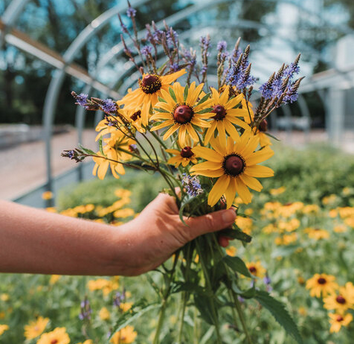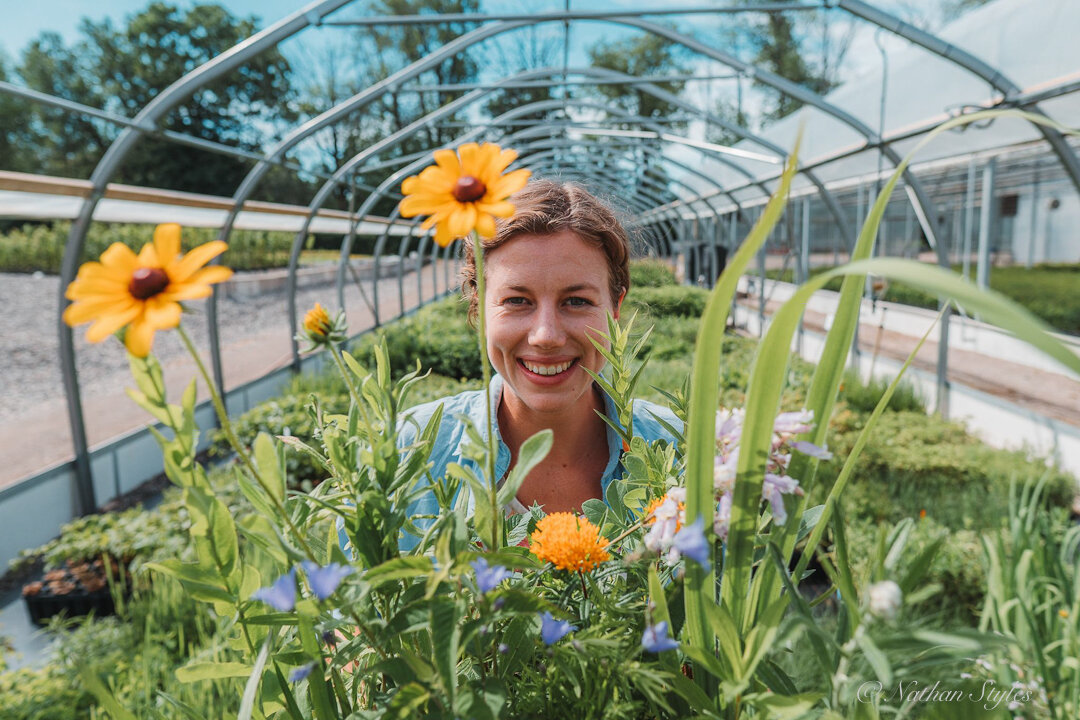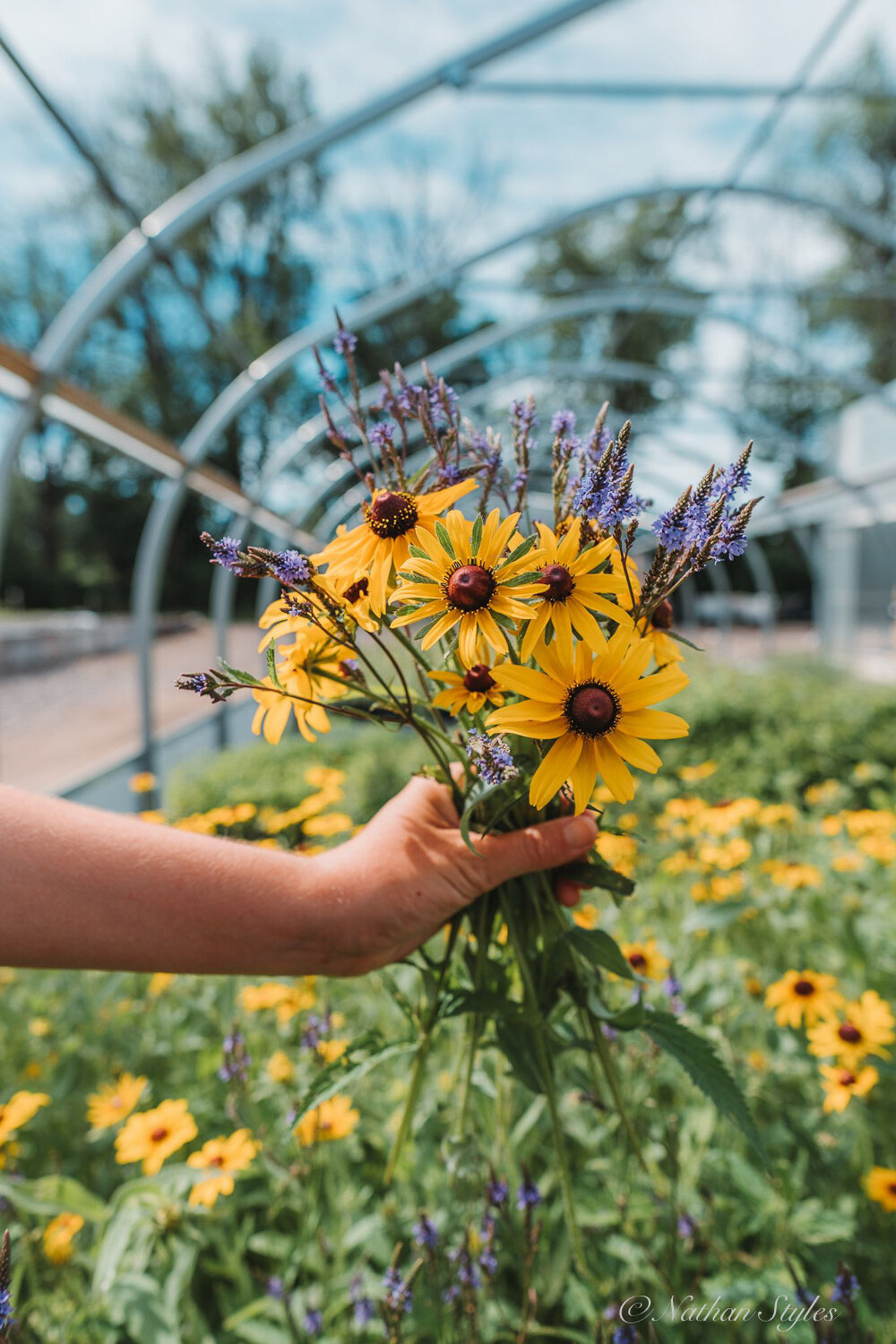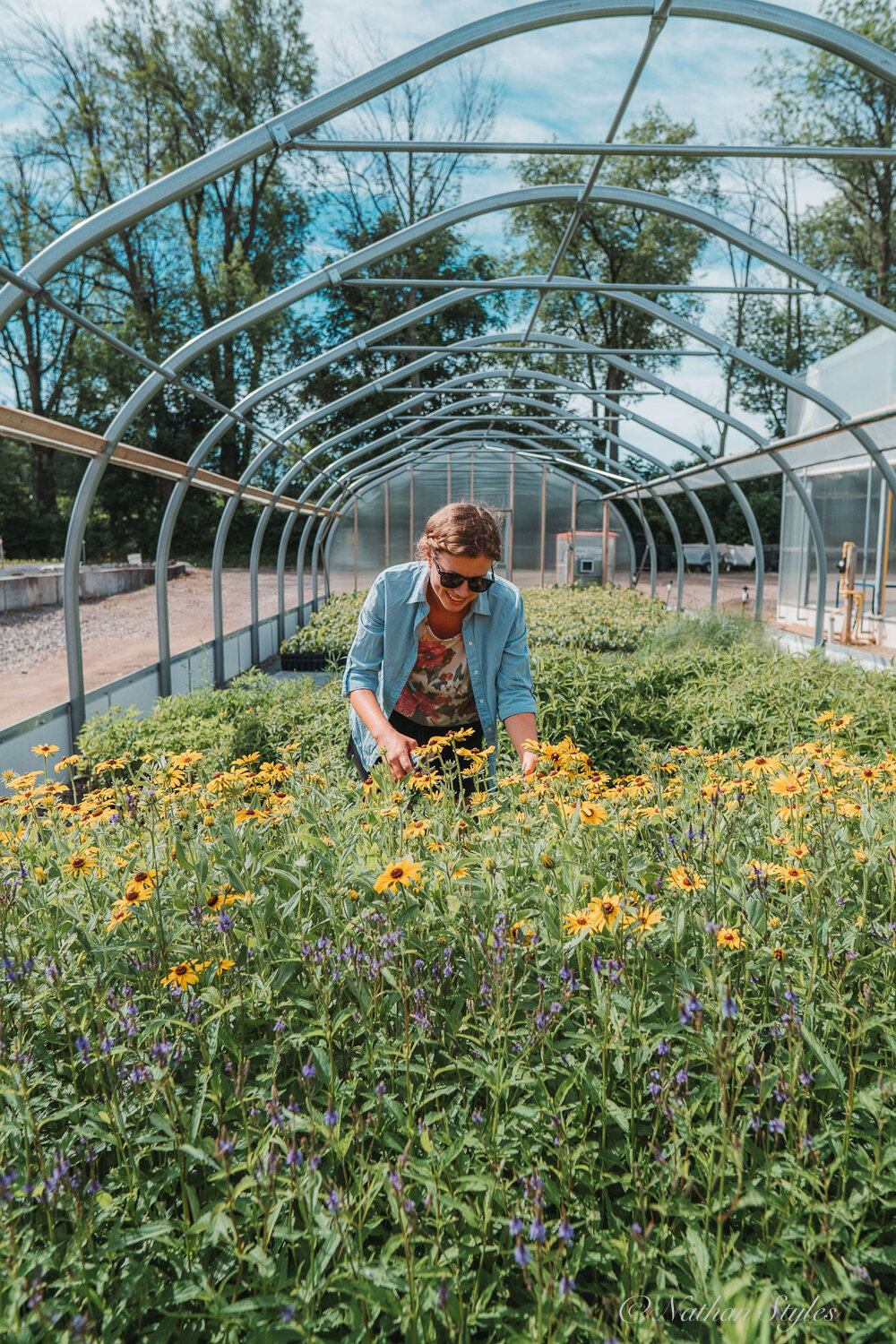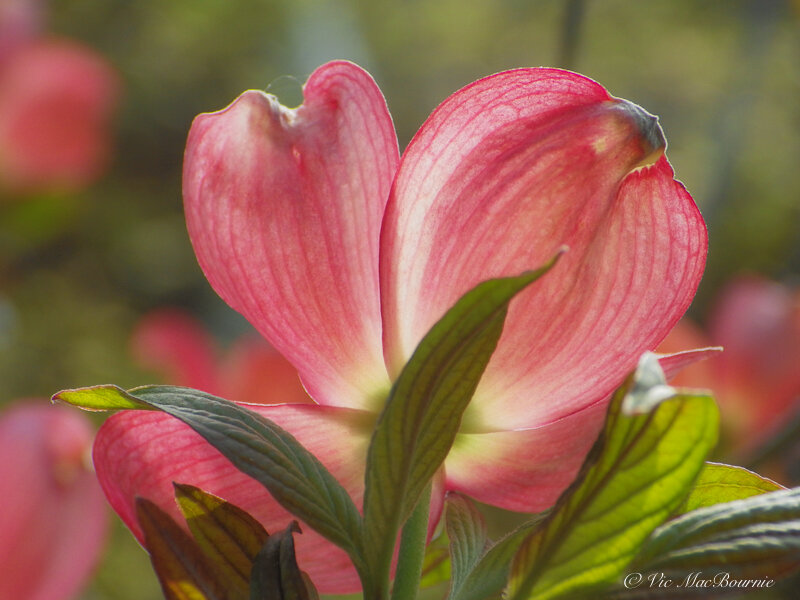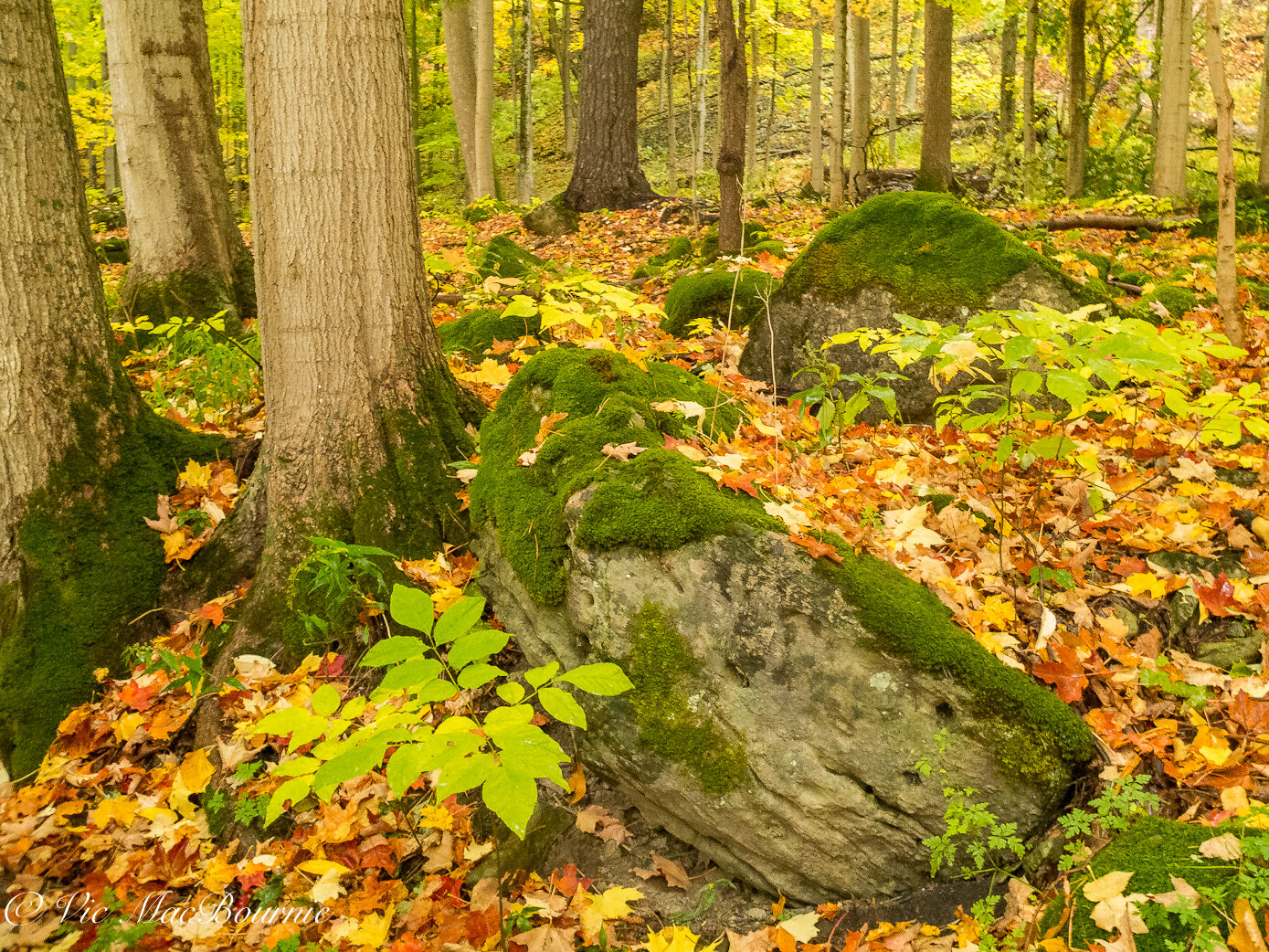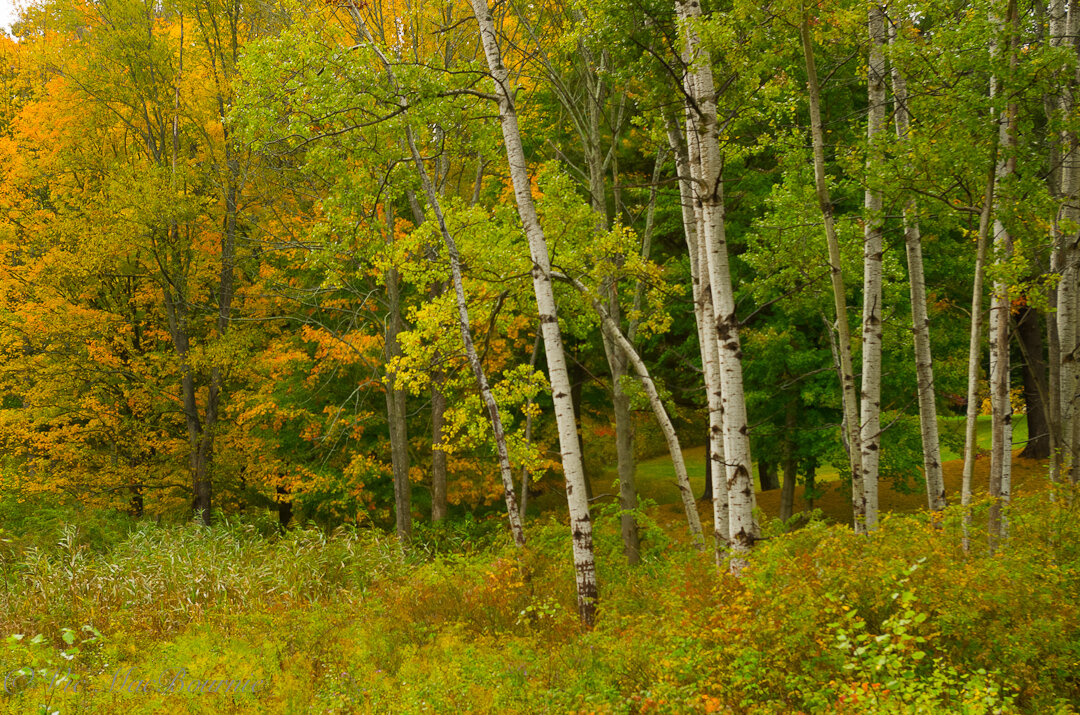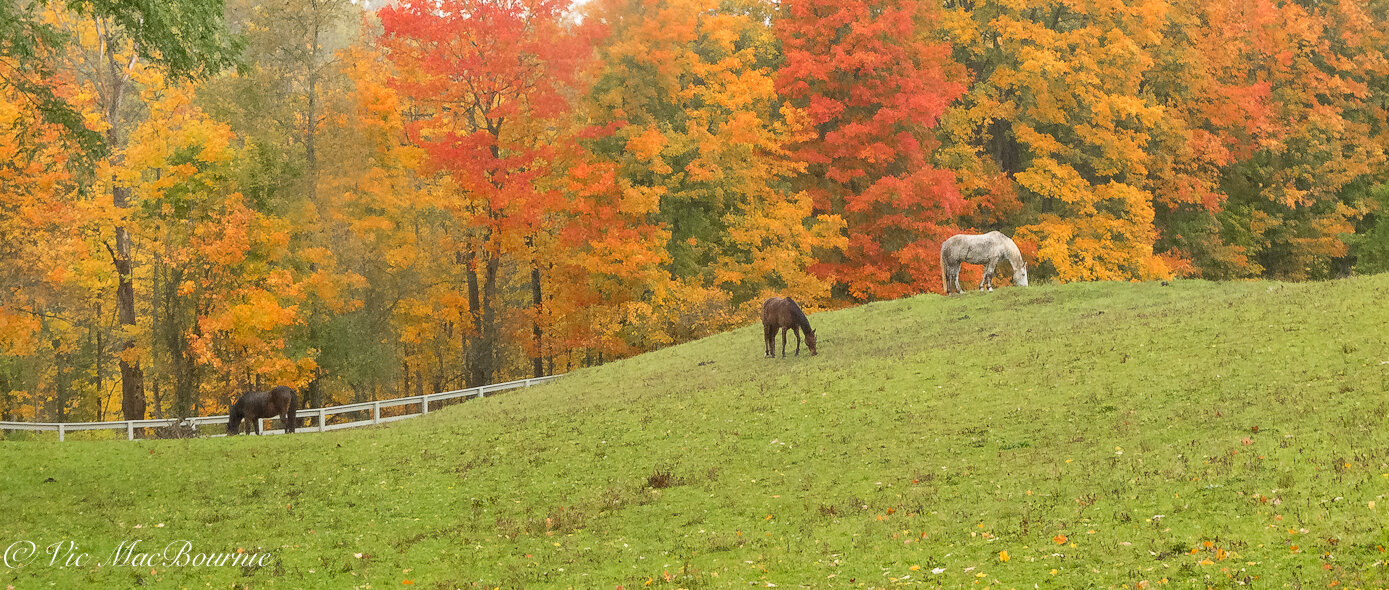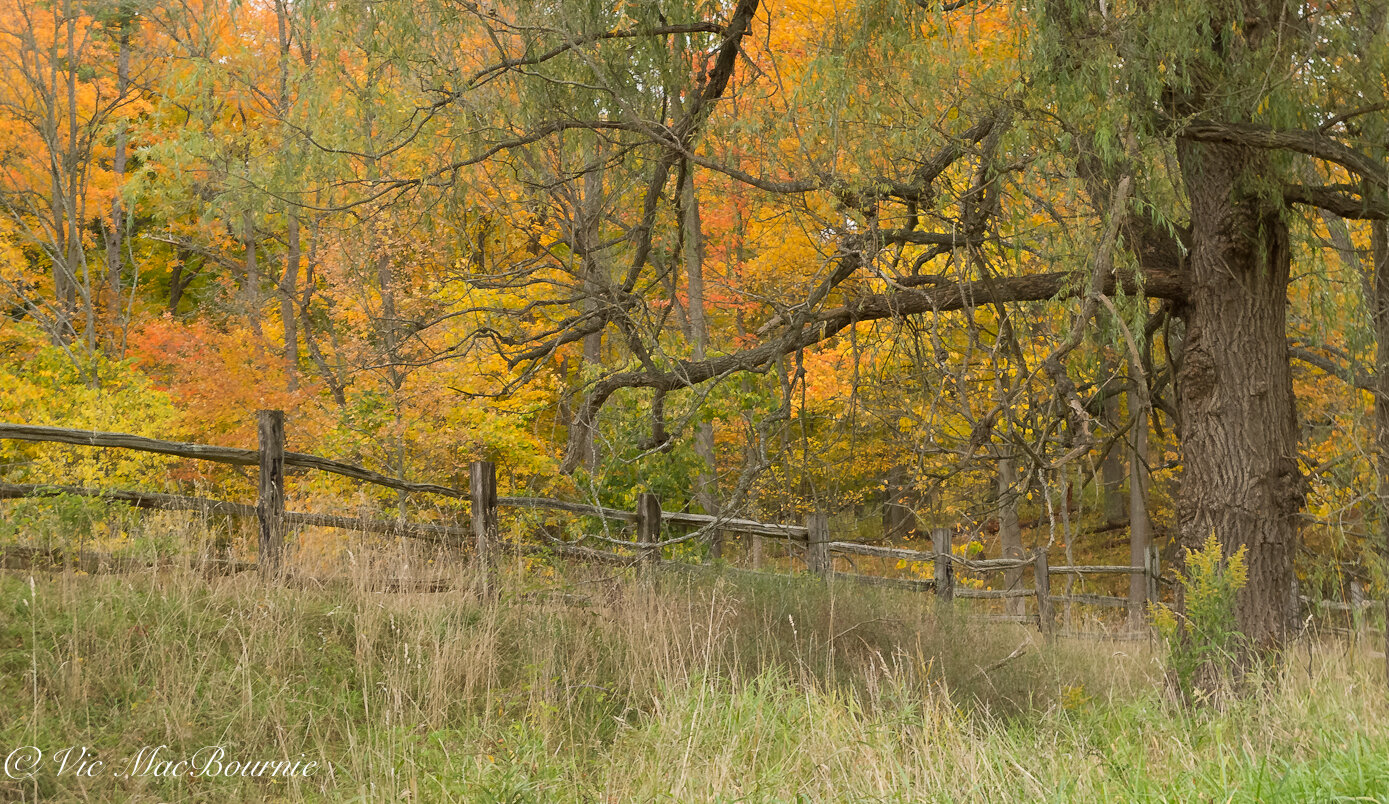Ontario Native Plants: Taking back nature one garden at a time
Reyna Matties and Ontario Native Plants is saving our natural environment one garden at a time. The Hamilton-based native plant on-line store offers more than 100 plants, shrubs and trees native to Ontario and the Carolinian Canada forest zone to shoppers on their informative on-line catalogue.
McMaster grad brings native plants to Ontario
Reyna Matties knows her native plants, and she knows how important they are in urban revitalization, restoration and sustainability.
The 30-year-old manager of Ontario Native Plants (onplants.ca) is using that wealth of knowledge in her mission to bring back native plants to Ontario one garden at a time.
For my article on why native plants are important in the garden, go here.
What is Ontario Native Plants?
Ontario Native Plants (onplants.ca) is a Southern-Ontario mail order company, based out of Hamilton, that specializes in providing an impressive selection of native plants, shrubs and trees to Ontario residents. They offer more than 100 varieties of native plants. To ensure clients get only the hardiest plants native to their agricultural zone, Ontario Native Plants only delivers to Ontario residents.
It all started for Matties at McMaster University in Hamilton, Ontario where she earned a bachelors of Science (Environmental Science) and a Masters of Science (Biology). But it wasn’t until she embarked on her Masters thesis project that her love of native plants took root.
Her thesis focused on analyzing the success of a new parking lot restoration project on the McMaster campus. Part of the restoration involved the extension of a riparian buffer to protect a creek habitat from water runoff of a large campus parking lot.
“Being able to provide habitat and a food source for the local wildlife that visit your yard is such a beautiful and important motivation.”
The creation of the buffer called for the extensive seeding with a mixture of hardy prairie native plants (rye, bergamot, rudbeckia, etc.). Plant and soil studies were done to assess the success of the restoration (i.e. proportion of native to non-native plants).
Reyna Matties with a selection of native wildflowers from the ONP greenhouses.
The research created an impressive native-plant knowledge base and she landed the manager’s position for the small upstart company in 2019. Ontario Native Plants actually started in 2017, the same year Reyna graduated from McMaster. The job seemed too perfect to be true, combining her education with a desire to make a significant environmental impact.
The McMaster project, Reyna explains, “grew an interest of mine in urban planting and green infrastructure in cities. More specifically, I became interested in how people perceive restoration work and planting native in general.”
“I wanted to work at a plant nursery or business that helped with ecological restoration, or connecting home owners to native plants. The ONP manager job ticked all my boxes of what type of work I wanted to be involved in, and also provided a diversity of roles to learn from in a new small business.”
A bouquet of wildflowers from ONP.
Needless to say, the business literally took off after Reyna came on board in the spring of 2019. Today, the on-line mail order business is enjoying great success with a strong on-line social media presence and word-of-mouth advertising.
In 2019, ONP had a crew of about four people during the busy period between May and June. For 2020 that number almost doubled to about seven people and Reyna says that number is expected to grow again in 2021.
“The last two years (2019 and 2020) have been very important for our growth as a business,” Reyna explains.
She has great praise for the staff that have played a key role in ensuring the success of the business.
“The crews have all been such amazing individuals that enjoy working with plants, and bring so much energy to each day,” she explains.
Part of that success is the result of a growing awareness of the environment and the loss of habitat being experienced worldwide. “The interest for planting native is growing,” she explains. “Being able to provide habitat and a food source for the local wildlife that visit your yard is such a beautiful and important motivation.”
The Covid pandemic is also creating more awareness of gardening and the environmental affects of planting native flowers, trees and shrubs.
Reyna looks over some of the many wildflowers in one of the ONP greenhouses.
“With people staying home more in 2020, there was another natural surge in gardening with homeowners having more time and interest in gardening,” Reyna explains. “The physical and mental benefits are mentioned frequently by our customers.”
“With our store being completely online and contactless, we have been able to provide a very efficient way for people to purchase plants for their gardens. We are excited for 2021 and are busy updating our website and getting organized for our opening on March 1, 2021.”
But taking an upstart, online native plants nursery to new heights takes more than good timing and a growing interest in using native plants in the typical backyard garden. It takes both a knowledge of plants and first-rate service.
Ontario Native Plants seems to have found the perfect combination.
I can attest to this after a work colleague and I placed an order with the company last year. Not only were the plants shipped in a timely and obviously caring manner, the product was vigorous and extremely healthy. It transplanted well and produced in its first year. The cardinal flowers I planted proved to be a simply outstanding addition to our garden and helped to draw in a number of hummingbirds and hummingbird moths that worked the flowers from early to late summer providing me with endless chances to capture excellent photographic images in a natural setting.
“Since we are only an online store, we have been able to focus on creating a very streamlined ordering process. Customers can simply create an account, and then add different plants to their cart. The check-out is also very simple, and payment is processed by credit card or Paypal. (Website: onplants.ca)
By delivering only to Ontario, clients can by assured they will receive only the hardiest plants native to their agricultural zone.
“We only ship within Ontario as our business model is to keep the plants in their native range. We also only grow our plants from Ontario sourced seed, so you can be assured that the plants will be well adapted, and also genetically unique. We provide information on each plant’s hardiness zone for you to determine whether it can grow succesfully in the zone you live.”
Success certainly breeds more success, much to the benefit of their clients.
“We have also been able to add a handful of new species each year and, in 2021, we are offering more than 100 species of flowers, grasses, trees, shrubs, and ferns. Pretty exciting stuff!”
An important part of the ongoing success of the business is a growing awareness of the importance of using native plants in typical urban and suburban gardens rather than more showy hybridized versions of the same plants.
“We work to provide as much information in the plant descriptions about the benefits of each plant to the local wildlife, often an important nectar or food source for a variety of butterflies, caterpillars, moths, etc. We also share articles or information on Facebook and Instagram that highlights the importance of native plants,” Reyna explains.
Three reasons to use native plants
What does Reyna consider the three main reasons for using native plants in our gardens?
1. Food source/habitat for local wildlife. From the nectar from a Blue Lobelia flower, to the acorn of an Oak tree, native plants provide a diverse buffet for local wildlife in your garden. Especially in urban areas where green space is limited, bringing native plants into your yard provides “food along the road” for migrating insects, birds, and other small mammals.
2. Ecological connectivity – pockets of native plants in homeowner gardens help weave back together ecosystems that have been removed. This once again could benefit wildlife with corridors for movement or food, habitat, etc. Native plants also contributes to climate resiliency by cooling urban areas with connected patches of trees, shrubs, flowers, etc.
3. Mental and Physical benefits for the gardener – Digging in the soil and taking time to observe the beauty around you. Noticing the small insects that feed on your plants. Moving compost all day and the satisfaction of the physical labour. There are so many ways to enjoy your garden, and then, in turn, benefit from that enjoyment.
This season ONP is adding 19 new plants to its on-line catalogue of more than 100 plants, shrubs and trees. The on-line catalogue lists 59 perennial species, 48 tree and shrub species (For this year’s new plants, look for the ones listed in bold).
A quick look at the website shows perennial flowers ranging from Wild Columbine (see my earlier article here), Wild Ginger, three types of Milkweed, two types of Joe Pye, Asters, Wild Strawberry, Bottle Gentian, Woodland Sunflower, Rose Mallow, False Solomon’s seal, two types of Beebalm, Yellow Coneflower and Black-eyed Susan.
Grasses listed include Big and Little Bluestem, Switchgrass, Bottlebrush Grass and Indian Grass. Carexes include Bebb’s sedge and Fox sedge. Four ferns are listed including Lady Fern, Marginal Wood Fern and Sensitive Fern.
ONP has an impressive list of 23 trees listed for sale, including Alternative Leaved dogwood, Tulip tree, Eastern Red Cedar, Paper Birch, Paw Paw (see my article here), Eastern redbud (see my article here), Eastern Hemlock, Tamarack, White Cedar and Bur Oak.
There are 25 Shrubs listed including Serviceberry, Black Chokeberry, Flowering Dogwood, two types of Sumac, Elderberry, Lowbush Blueberry and Nannyberry.
Besides individual plants, shrubs, trees and grasses, the catalogue also offers gardeners “plants packs,” perfect for gardeners planning to plant a larger area with more specialized needs. For fern lovers, there are a number of packs offering assorted ferns, or packs of four specific fern types such as lady fern, sensitive fern or wood fern.
In addition, there is a plant pack focused on rain gardens.
The catalogue is organized to provide plenty of assistance to seasoned gardeners as well as novice native gardeners. Not only are the plants broken down according to light requirements (partial shade to shade, full sun, sun to partial shade…) it is also broken down according to moisture requirements and soil type.
Reyna works in one of the greenhouses at ONP headquarters in Southern Ontario.
New gardeners or gardeners new to ordering through ONP should be aware that many of the plants sell out over the course of the spring and summer, so they may want to get their orders in early.
Last season Lowbush blueberry, Elderberry, Pawpaw Tree, Butterfly milkweed and Wild lupine sold out.
In addition to native plants ONP also sells trees and shrubs. In Spring they offer 1-year-old plants, and then by late summer start selling a 4-month-old crop from that year. So trees and shrubs don't sell out as quickly throughout the year.
“With perennials (Flowers, grasses, ferns) there is only one crop seeded either in the prior fall or Spring, so we are able to order more as quantities permit, but those are more in demand. This is why we emphasize ordering as soon as you can to ensure you get the variety you were hoping for in Spring.”
How to place an order
ONP start taking orders on March 1st. Then, begin to ship orders with ONLY trees and shrubs in mid April. All other orders begin to ship in early May. It is essentially a queue so the earlier you order, the earlier your plants will likely be shipped in May.
Ontario Native Plants offers an updates page (https://onplants.ca/updates/) where they post information on what order numbers are shipping and good tips on making up your order.
Western Canada readers should check out Saanich Native Plants
Ferns & Feathers readers in Western Canada, specifically British Columbia, should check out Saanich Native Plants. They grow plants and produce seeds native to a variety of habitats in the Victoria area, including meadows, woodlands, forests, wetlands, beaches and more.
Their impressive website states they aim to inspire and empower people to restore and conserve nature by providing native plants, seeds, education and expertise.
“We’ve built our business on the core principle of valuing nature. We try to continually work with integrity and excellence and value collaboration greatly.”
More links to my articles on native plants
Why picking native wildflowers is wrong
Serviceberry the perfect native tree for the garden
The Mayapple: Native plant worth exploring
Three spring native wildflowers for the garden
A western source for native plants
The Eastern columbine native plant for spring
Three native understory trees for Carolinian zone gardeners
Ecological gardening and native plants
Eastern White Pine is for the birds
Native viburnums are ideal to attract birds
The Carolinian Zone in Canada and the United States
Dogwoods for the woodland wildlife garden
Bringing Nature Home by Douglas Tellamy
A little Love for the Black-Eyed Susan
Native moss in our gardens
As an affiliate marketer with Amazon or other marketing companies, I earn money from qualifying purchases.
Building your Woodland: One Tree at a time
Dream of what your woodland garden can be and we will work together to make it real. By using native and non-native trees, plants and flowers, you can transform your garden into a wildlife haven. Then spend the day photographing the nature around you.
Woodland wildlife garden needs time to mature
A woodland garden can be as big or as small as you want. Start with a single tree in your yard and try to imagine what that tree can become.
Remember a woodland garden can take time to mature into perfection. Like a freshly-built home that lacks the layers living brings to it, a woodland needs that same time to develop the multiple living layers that make it the inviting place we want to experience. It too needs its spirit; one that starts deep in the soil and stretches high into the upper layers of the forest canopy. If you are just starting out developing your woodland garden design, the first rule to understand is that a woodland garden is all about layers. Three layers really, but you could argue four even six and still be correct.
It all starts with the upper canopy
The top layer, the upper-level canopy, is what builds the strength of the woodland over time. If you do it right, the middle layer is where much of the beauty resides. Then there is the shrub layer and finally the ground layer, also not without its share of beautiful things. The ground layer, appropriately made up of ground covers, forms a protective layer that encourages all that is above it to prosper.
Early morning offers a different experience in the Woodland for both photographers and dreamers. Get up early, catch the light, and sneak in an afternoon nap.
Maybe, if you are like me and bought into an older neighbourhood, you are already blessed with a mature tree or several that helps to create the critical upper canopy. If you are not blessed with any large trees on your site, that large maple growing in your neighbour’s yard casting its lovely shadow over your yard will do the trick too. Remember though, your neighbour could cut that tree down and your upper canopy can disappear in an afternoon. Better to plant your own as soon as possible as a backup to your grumpy neighbour’s tree.
This photo illustrates the layering of our mature woodland garden. A large locust and tulip tree form the upper canopy, while a mautre Cornus Kousa in full flower forms part of the mid-canopy. The kousa is joined by serviceberry, redbuds and Cornus Florida in the lower canopy of this area of the garden. Ostrich ferns fill in as the primary ground cover.
Large trees form the upper canopy
When we talk upper-level canopy, we’re talking the big boys of the tree world.
Think maples, locusts, lindens, oaks and a host of other native trees that will grow large enough to eventually tower over the garden.
If you live in the Carolinian zone (link to my post) or a similarly appropriate area and need a quick canopy, consider planting a couple of Tulip trees. They are fast-growing native trees, growing up to 35 metres tall. In fact, they are among the tallest and straightest trees in the forest. In fact, they were often the tree used as telephone poles because of their straight growth habits. Their canopy can be trimmed up high as they shoot to the sky, and the shade they throw is open enough to allow understorey plants to grow happily.
Tulip trees have a spectacular yellow-green 5 centimetre long spring blooming, tulip-shaped flowers. Although the fast-growing tree is not the best host of insects and caterpillars that provide food for birds, the seeds of the tulip tree grow every year and are a source of food for birds and small mammals.
Oaks are kings of biodiversity
If you are looking for the perfect tree to form your upper canopy, you would be hard pressed to do better than one of the mighty oaks. Consider planting an oak near your tulip trees where it will grow up to provide a future canopy after the tulip trees have served their immediate goal of providing a fast and effective canopy in the short-term.
What makes Oak trees so important?
As Douglas W. Tallamy explains in his book Bringing Nature Home: How you can sustain wildlife with Native Plants, (link to my review of the book) a single white oak tree can provide food and shelter for as many as “22 species of tiny leaf-tying and leaf-folding caterpillars.” These combined with all of the other “lepidopterans (moths and butterflies), heteropterans (true bugs), homopterans (aphids, plant hoppers,and scales), thysanopterans (thrips), orthopterans (katydids, grasshoppers, and crickets), … that develop on white oaks are considered s well, you can appreciate how important this one plant species is to the mintenance of biodiversity.
In fact, a single oak can support up to 534 different species and leads the list of important native trees providing biodiversity in our forests and woodlands.
In Tallamy’s list, The willow is second supporting 456 species followed by cherrry and plum (also 456); birch trees (413); poplar, cottonwood (368); crabapple (311), Maple, box elder (285), Elm (213); pine (203); Hickory (200); Hawthorn (159); spruce (156) …”
If attracting birds and creating a biodiversity of insects, caterpillars, moths and butterflies in your garden is important to you, I urge you to get Tallamy’s book and use it as a bible for creating your backyard landscape design.
Blessed with mature trees in our yard
When we bought our home here in southern Ontario some 25 years ago, my wife and I were blessed with several large trees on the property, including two lovely locust trees, a large linden and Austrian pine in the backyard and two large maples in the front yard of the property. Since then, more trees big and small (at last count 28) have joined the originals to help form the foundation of our woodland.
The understorey: Where the (real) fun starts
The middle layer is the one that can really shine in the woodland.
This is where you can introduce a myriad of flowering trees. Think flowering dogwoods, both the native variety (Cornus Florida) with a multiple of hybrids or the prolific Kousa Dogwoods that flower later in the season after the leaves appear on the branches. A combination of the two gives you a magnificent show from early spring into summer. Then, if you have room, intermingle a couple of Redbuds (link to my post on Redbuds) or Serviceberries between the dogwoods. Their ethereal flowers are absolute showstoppers in any garden big or small.
And, if that’s not enough, how about a couple of azaleas growing beneath the Dogwoods, Serviceberries and Redbuds. That’s a showstopper.
These are just a few ideas to think about while you contemplate your Woodland. Future posts will delve a little deeper into the different layers, so stay tuned. For example here is a post on three of my favourite groundcovers. Here is another post on a favourite groundcover for a hot dry location. This post looks into moss as a ground cover and plants that create a similar experience as moss in the garden.
I would love to hear some of your planting ideas for your top two layers your Woodlands. Share them with us below in the comment section.
This page contains affiliate links. I try to only endorse products I have either used, have complete confidence in, or have experience with the manufacturer. Thank you for your support.
Finding inspiration in local woodlands for our garden design
Drawing garden inspiration from the simple beauty of our fall woodlands is not only an important educational exercise but a joy we should all experience as fall turns to winter. Recognizing the beauty in a moss-covered rock and how we can incorporate that same feeling in our own gardens is just the beginning.
Take a walk in the woods for a little inspiration
There is nothing like fall in Ontario to inspire a Woodland gardener.
When the leaves change along with our weather, it’s the perfect opportunity to load my dog, Holly, into the Subaru along with my camera gear and head out to the forests and fields surrounding our home. Luckily, Holly and I don’t have to go far to experience mature forests and some spectacular fall scenes, but even if we did, getting out and about at this time of year is a top priority.
Especially on a rainy, overcast day when the colours are at their most vibrant.
Not only is it an opportunity to give my cameras a workout, it’s a vivid reminder of how simple, yet beautiful a natural Woodland garden featuring native trees and plants can be.
If you ever wondered whether a Woodland garden is right for you, a slow drive through the forest stopping to admire the details of a small stream, the texture of the hickory or the elegance of a birch grove on the edge of a forest, should make the decision an easy one. There is no better place to go to find inspiration for your own woodland garden.
This image taken with the Fujifilm X10 shows the simplicity of a woodland and provides a little inspiration for gardeners looking to replicate nature at home.
This is the inspiration we can take home with us and try to recreate – even in a small way – in our own gardens.
Recreate nature in your backyard
Our small backyard birch grove, made up of three clump birch all planted about 10 feet apart, was inspired by a birch grove I remember walking through regularly probably 30 years ago on my fall strolls along the Niagara escarpment at Mount Nemo Conservation Area in Halton, just outside Burlington Ontario. But I suspect that inspiration also has its roots much further back when my wife and I vacationed in Alberta’s Rocky Mountains during October. I remember admiring the beauty of the groves of Aspens with their white tree trunks and yellowing leaves standing out in the magnificent landscapes.
Inspiration for our small birch grove may have can come from experiences earlier in my life in the Rocky Mountains, but another inspirational landscape that draws on the same experiences can be found a few kilometres from my home on the forest’s edge.
We can’t recreate the wide-open spaces of the mountains in our backyards, but we can use that inspiration to recreate a version of this that reminds us of those memorable times. (Rick Darke’s now out-of-print book, “The American Woodland Garden: Capturing the Spirit of the Deciduous Forest” illustrates this approach perfectly.)
The simplicity of a backdrop of fall colours can provide inspiration for Woodland gardeners. A single tree can take the place of a forest in a backyard setting.
Closer to home, a single maple in full colour stands out in the forest despite competition from other trees surrounding it. An inspiration to plant our own maple in our gardens. If space is a problem, consider a smaller tree that gives you much the same effect. A Japanese maple, though not a native tree, can provide that hit of red throughout the year. I have three Japanese Maples in the front garden and each has their own unique fall color display ranging from a deep red to a vibrant orange. A native dogwood or serviceberry – single or multi-stem – both smaller native trees with good fall colour are excellent alternatives that also have the benefit of outstanding spring flowers and berries that will attract a large variety of birds and mammals.
On a smaller scale, the moss-covered rock rising out of the forest floor dotted with a tapestry of coloured leaves can be the inspiration for a similar boulder added to the empty area under the maple in your backyard. It is a perfect example of garden art that is both natural and ever changing with the seasons. Place the moss-covered boulder near a bird bath and give our feathered friends a place to land before hopping to the birdbath. Filling the bird bath daily is also an opportunity to gently spray your mossy boulder to keep it looking its best and stop it from drying out.
It’s also the perfect opportunity to photograph backyard birds on a natural mossy boulder. Maybe you are lucky enough that the mossy boulder itself has a natural shallow pool where water gathers. (If you visit the rockeries of local nurseries early in the spring, when the new shipments are delivered, look for a rock with a natural shallow hollow already there. If you find one, don’t hesitate. Grab it. They are not easy to find.) In some cases, small hollows can be carved out of an existing rock to give you a similar experience.
On my most recent walk through the forest, there were no garden beds, native grasses were long and naturalized, the forest canopy was often layered with mature trees – many of them in various degrees of decay and snags perfect for wildlife looking for a home. Many of the smaller shrubs like Highbush Cranberry and Alternate-leaved dogwood (Cornus Alternifolia) and trees were loaded with berries and nuts providing life-giving nutrients to our feathered friends and woodland creatures preparing for the long winter ahead. Native ground covers, too, like virginia creeper, bunchberry (Cornus Canadensis) and Jack-in-the-Pulpit (Arisaema triphyllum) show off their berries. Under the canopies of large trees, leaves form a magnificent and colourful ground cover providing a warm blanket for the wildflowers and small creatures, and hunting grounds for birds and mammals that depend so much on these fallen leaves. (For more on leaving your leaves, check out this post.) Hidden among the fallen leaves are millions of eggs and pupae that depend on the fallen leaves to provide a warm incubator until spring arrives.
There were no rakes here, no leaf blowers to break the glorious sounds of nature, no gas-powered vacuums to shred the leaves and destroy any life in them… no bags of leaves lining the edge of the forest waiting to be carted away by massive “garbage” trucks.
It was simply nature in all its simplicity and glory inspiring us woodland gardeners to slow down and accept it’s natural beauty.
A woodland backdrop with natural grasses can provide inspiration to Woodland gardeners. Try to take time during the spring and fall to photograph your favourite woodlands to draw inspiration from nature and use it in your own garden. All of these photos were taken with a Fujfilm X10, high-end point and shoot camera.
Fuji X10 is ideal enthusiast camera to take with you everywhere
In these days of the iphone, Samsung and other smart phones with top-notch cameras built into them, it’s hard to imagine why anyone would pay good money for a small compact camera often referred to as a high-end, point-and-shoot or enthusiast camera.
There is no question that cellphone camera’s are ideal for so many uses including garden photography. (Check here for an earlier post on using a camera phone to photograph your garden.)
But if photography is more than a passing interest, and you love the feel of a high-quality, elegantly machined piece of equipment, or you are looking for a second camera that easily fits into a pocket while still providing excellent image quality, then you might want to consider a high-end point and shoot camera.
The good news is that there are many available on the market both new and used. Most are not necessarily from today’s most popular names in photography, and range in price from about $400 Cdn. to several thousand dollars.
The camera market is changing so rapidly that it’s difficult to keep up, so I won’t even try.
I can talk about the Fujifilm X10 (click for full review) that I have used over the past several years and that I took with me on my recent fall foliage outings. There have been several iterations of the camera since the release of the X10. But essentially they are small upgrades to the original X10. One reviewer described the Fujifilm X10 as a “camera where its innards are as progressive as its exterior is nostalgic.” I could not agree more.
For enthusiasts who care about the camera specifications: It has a 12MP 2/3 EXR CMOS sensor; a 28-112mm equivalent F2.0-2.8 lens; an optical viewfinder with 85 per cent coverage; a 2.8-inch LCD display, shoots raw and jpeg images and can shoot 7 frames per second at full resolution or 10 fps at 6MP.
It also features a macro setting and super macro setting for getting up “close” and “real close” to flowers and insects.
That fixed 28-112mm lens is a fast lens, which helps you get sharp images of your garden in the low light of early morning and late evening without a tripod. To ensure sharp images, the camera also has built-in shake resistance.
The first time I saw the Fujifilm X10 I had to have it. A digital camera with the elegance and ease of use of a Leica, with more features than any garden photographer would need. Above all else, it featured what every former film photographer dreamed of – the ability to dial in specific nostalgic fuji films but in digital form. Every nature photographer has a soft spot in their hearts for the vibrant colours of Velvia; portrait photographers loved the softness of Astia, and for everyday use there is Provia. In addition, photographers have the option of dialing in Black & White film complete with filters for that Ansel Adams look.
Velvia is my choice for any garden shots involving highly colourful flowers where I need to pull out that vibrancy. Astia adds a lovely softness to early, mist-filled mornings.
So what makes this a great camera to document your garden? Besides having all the necessary features to help you create beautiful garden images including closeups of flowers, larger garden views in low light, multiple frames per second to capture wildlife and a variety of film choices to create different effects, its greatest assets are its small size and its inherent ability to inspire you to pick it up and actually take photos with it.
Not unlike my outing into the natural woodland to draw inspiration, photography enthusiasts can draw similar inspiration from an elegant camera that encourages you to pick it up and capture the garden in all its beauty. These enthusiast cameras, unlike bulky 35mm SLR cameras, are compact enough to carry around with you on a regular basis and will inspire you to document the changing seasons in the garden and explore the artistic images that are there just waiting to be unleashed.
And, if that is not enough, just think about how much better your instagram account could become.
• This page contains Amazon affiliate links. This blog would not be possible without your continued support.

